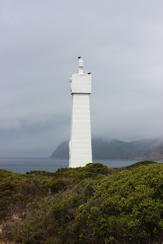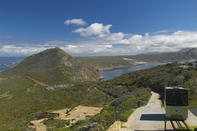January 1488

The ancient mariners like the Phoenicians, Egyptians, Greeks, Arabs, Chinese and Indians may have rounded the Cape, but history awards the prize to Portuguese navigator Bartholomew Dias. In August 1487 he led three small caravels out of the mouth of Lisbon's Tagus River on the orders of King Joäo to find a sea route to the East.
The small fleet stopped all along the way, and in January 1488 they were blown around a sizeable promontory. They had rounded the most significant point of their journey, the bottom tip of Africa, but didn't realise this until, eventually, they turned round near Bushman's River. More ships followed, and the rest, as they say, is history. You can visit a replica of the Padräo (stone cross) that the jubilant crew erected at Cape Point.
Cape Point Lighthouse

Cape Point isn't the southernmost tip of Africa (though it is the southwestern-most), but it feels like it is. The wild seas are below and the mountains extend back from it. It is a famous tourist spot and the Cape Point Lighthouse is worth a visit. The first lighthouse was built in 1859 and stood 238 metres above sea level.
It was used as a navigational landmark, and now acts as a central monitoring point for all lighthouses along the South African coast. Some people take a funicular up to the lighthouse, which is a fun railroad trip that allows you to drink in the scenery of the Cape Point Nature Reserve.
The funicular is named ‘The Flying Dutchman’ after the legendary ghost ship of the 1800’s that is believed to still haunt the waters around Cape Point A 'new' lighthouse was built in 1911 to replace the original. It's lower down on the headland so the beam would be less affected by fog.
 If you have only a day or two in Cape Town on your South African holiday, this self-drive route around the Cape to Cape Point covers the gre...
If you have only a day or two in Cape Town on your South African holiday, this self-drive route around the Cape to Cape Point covers the gre...